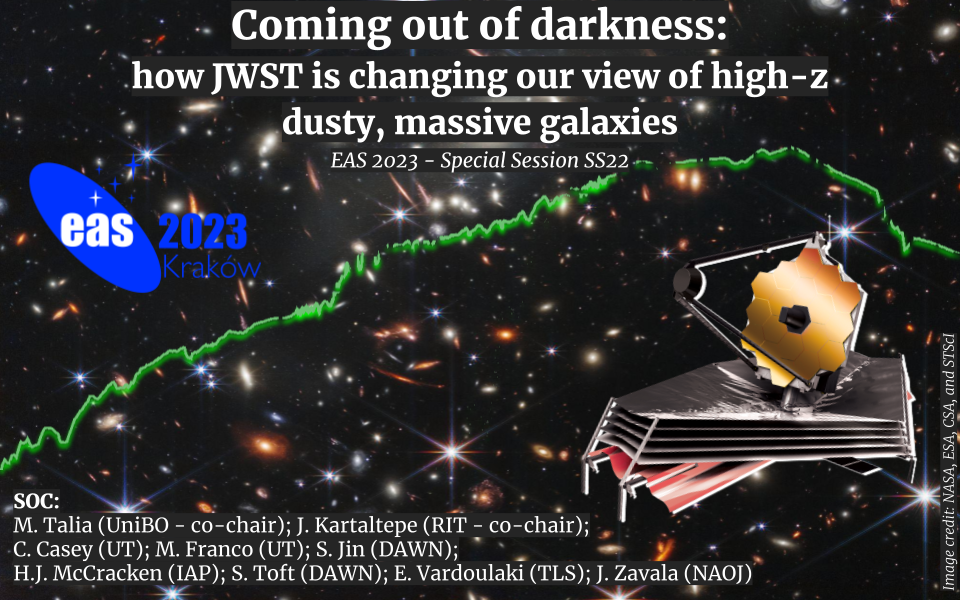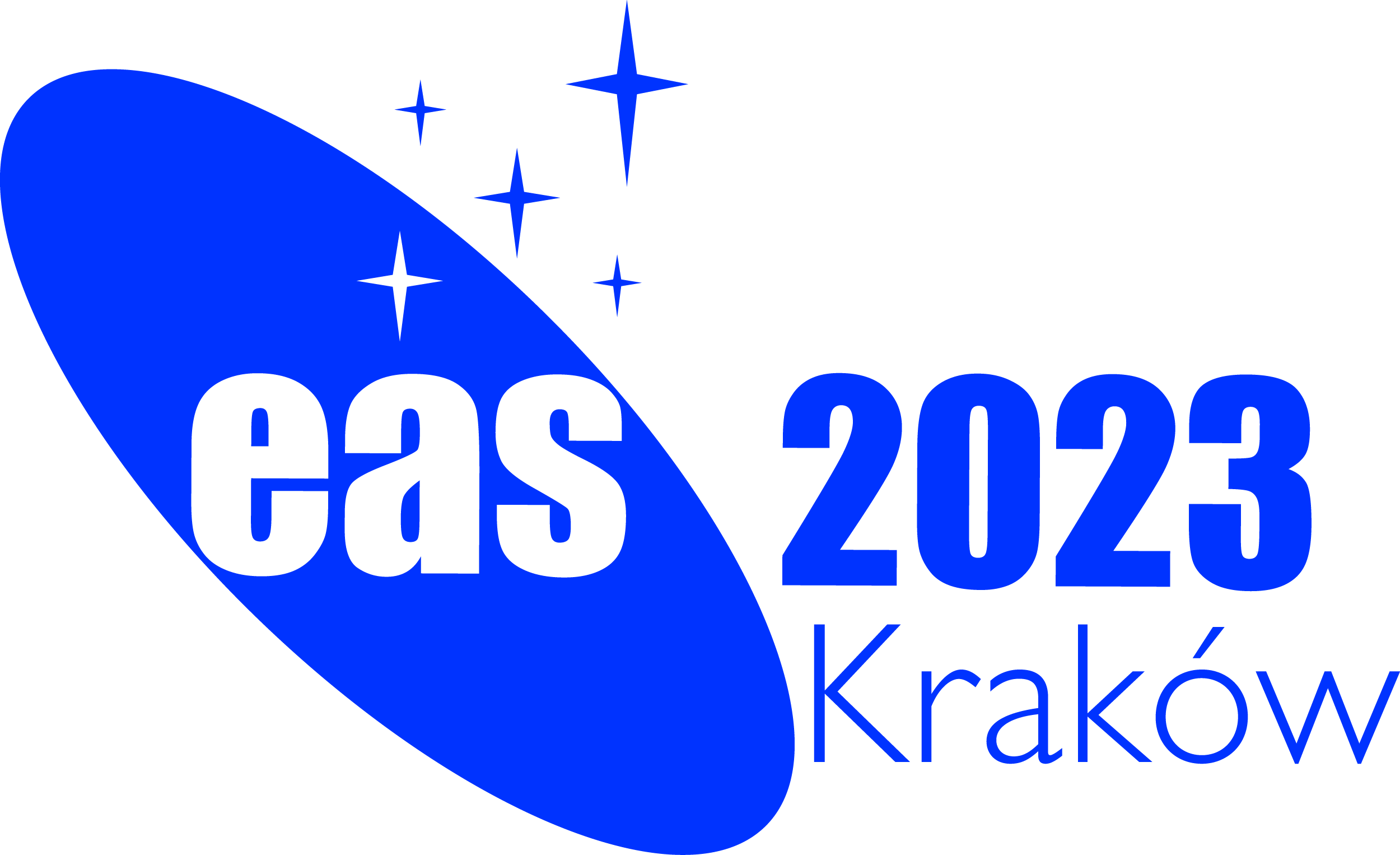Special Session SS22
12 July 2023
Coming out of darkness:
how JWST is changing our view of high-z dusty, massive galaxies

News:
The program of the session is online!
Aims and scope
Our knowledge of the young Universe (z>4) is currently biased towards unobscured galaxies, which can be readily detected in rest-frame UV observations, but there is now strong evidence for the existence of a population of significantly dust-obscured massive galaxies at high redshift. These galaxies not only might have a role in shaping the cosmic star-formation rate density at early epochs, but are also very promising candidate progenitors of the ever growing number of passive galaxies discovered at z>2, whose rapid emergence poses problems to theoretical models and simulations.
Thanks to (sub)mm and radio facilities (e.g., ALMA, JVLA), the astrophysics community aims to conduct a complete census of these sources, but many open questions remain about their properties and evolution, especially because of their extreme faintness in the optical/NIR regime. In the near future, however, many of these galaxies will be revealed from the darkness by JWST, thanks to its exquisite sensitivity in the near-infrared, as recent ERS results are already showing.
Programme
The exciting advances in our understanding of these elusive systems made possible by JWST need to be discussed in all their aspects, by bringing together the observational experts that devoted recent years to the quest for dust-obscured galaxies in the early Universe, and the theorists who are working to explain their nature in the framework of galaxy evolution models. In particular, we will try to answer the following questions:
- What are the properties of the sub-mm/radio-selected "formerly dark" galaxies detected by JWST?
- What can we say about the galaxies that will stay in the dark despite JWST? Will we still be missing a dominant population of massive galaxies?
- What do we expect from future deep MIR/sub-mm/radio surveys in terms of the discovery of possibly even darker sources?
- How do the observational results relate to what we expect from simulations?
Invited speakers
- D. Elbaz (CEA Saclay)
- D. Liu (MPE)
- M. Franco (UT)
Scientific organisers
M. Talia (UniBO - co-chair); J. Kartaltepe (RIT - co-chair);
C. Casey (UT); M. Franco (UT); S. Jin (DAWN); H.J. McCracken (IAP); S. Toft (DAWN); E. Vardoulaki (TLS); J. Zavala (NAOJ)
Contact
M. Talia margherita.talia2 @ unibo.it
J. Kartaltepe jeyhan @ astro.rit.edu
Updated on Thu Jun 15 22:55:15 CEST 2023
|

